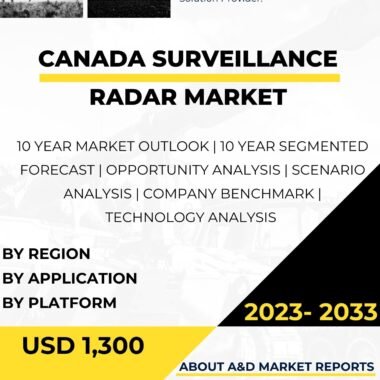Description
The Small Unmanned Aerial Vehicle (UAV) market in Australia is experiencing significant growth and diversification, driven by advancements in technology, increasing demand for drone applications, and supportive government initiatives. Small UAVs, also known as drones, are unmanned aircraft systems that weigh less than 25 kilograms and are increasingly being used for various civilian, commercial, and government purposes. This article provides a comprehensive overview of the Australia Small UAV market, including its significance, current applications, major players, technological advancements, government regulations, civilian applications, and future prospects.
The significance of the Small UAV market in Australia lies in its versatile and cost-effective nature, providing valuable solutions for a wide range of industries and applications. Small UAVs offer the ability to capture high-resolution aerial imagery, conduct surveillance and monitoring, collect data for mapping and surveying, deliver goods and medical supplies, and support search and rescue operations, among other functions.
The Australia Small UAV market encompasses various types of drones, including quadcopters, fixed-wing UAVs, hybrid platforms, and vertical take-off and landing (VTOL) drones. These UAVs are equipped with advanced sensors, cameras, and data transmission capabilities, making them suitable for diverse applications in different industries.
The current applications of Small UAVs in Australia include aerial photography and videography, agriculture and precision farming, infrastructure inspection and maintenance, environmental monitoring, emergency response, and commercial delivery services.
Aerial photography and videography are among the most popular civilian applications of Small UAVs. Drones equipped with high-resolution cameras offer cost-effective solutions for capturing stunning aerial footage and images for various purposes, such as real estate marketing, film and television production, and tourism promotion.
In agriculture, Small UAVs play a crucial role in precision farming. Equipped with multispectral and infrared cameras, drones provide farmers with valuable data on crop health, moisture levels, and yield predictions. This enables farmers to make informed decisions on irrigation, fertilization, and pest control, leading to increased crop productivity and reduced environmental impact.
For infrastructure inspection and maintenance, Small UAVs provide a safe and efficient alternative to manual inspections, especially in hard-to-reach or hazardous locations. Drones equipped with high-resolution cameras and thermal imaging sensors can identify potential issues in bridges, power lines, and other critical infrastructure, facilitating timely maintenance and repairs.
Environmental monitoring is another essential application of Small UAVs in Australia. Drones equipped with environmental sensors can collect data on air quality, water quality, and wildlife habitats, supporting environmental research and conservation efforts.
During emergency response operations, Small UAVs assist in search and rescue missions by providing aerial views of disaster-affected areas, helping responders locate and assess survivors and assess the extent of damage.
Commercial delivery services utilizing Small UAVs are also gaining traction in Australia. Companies are exploring the use of drones to deliver small packages and medical supplies to remote or difficult-to-reach locations, enabling faster and more efficient delivery processes.
The Australia Small UAV market is served by both domestic and international players. Domestic companies, such as DJI Australia and Insitu Pacific, contribute to the development, manufacturing, and distribution of Small UAVs tailored to Australia’s specific needs and regulations.
International UAV manufacturers, including DJI, Parrot, Yuneec, and senseFly, have a significant presence in the Australian market, providing a wide range of UAV models and solutions for various applications.
Technological advancements drive innovation in the Australia Small UAV market. Research and development efforts focus on improving UAV flight stability, extending flight endurance, enhancing payload capacity, and developing autonomous flight capabilities.
The integration of artificial intelligence (AI) and machine learning algorithms enables drones to process data in real-time, make autonomous decisions, and adapt to changing environmental conditions, enhancing operational efficiency and safety.
Battery technology and lightweight materials are critical areas of research to increase UAV flight endurance and payload capacity, allowing drones to operate for longer durations and carry more sophisticated sensors and equipment.
Looking ahead, the Australia Small UAV market is expected to witness continued growth and diversification. As drone technology evolves, new applications and use cases will emerge, creating opportunities for further innovation and adoption.
Government regulations and airspace management will play a significant role in shaping the future of the Small UAV market in Australia. The Civil Aviation Safety Authority (CASA) regulates the operation of UAVs in Australian airspace to ensure safety and prevent unauthorized use.
As the demand for Small UAVs grows, CASA and other government agencies will continue to develop and refine regulations to balance innovation and safety.
In addition to civilian applications, the use of Small UAVs in defense and law enforcement is also expected to expand in Australia. The ADF and law enforcement agencies may increasingly deploy UAVs for intelligence, surveillance, reconnaissance, and border security purposes.
In conclusion, the Australia Small UAV market is of significant importance in various civilian, commercial, and government applications. Small UAVs offer versatile and cost-effective solutions for aerial photography, precision farming, infrastructure inspection, environmental monitoring, emergency response, and commercial delivery services.
Domestic and international companies contribute to the diverse offerings in the market, driven by technological advancements in UAV flight stability, endurance, and autonomous capabilities.
Continued investments in research, development, and collaboration will be instrumental in maintaining Australia’s competitive position in the Small UAV market.
As regulations evolve and new applications emerge, the demand for Small UAVs is expected to grow, positioning Australia as a key player in the global UAV industry. Collaborations between government agencies, industry stakeholders, and international partners will be crucial in further improving the effectiveness and safety of Small UAVs in Australia.




